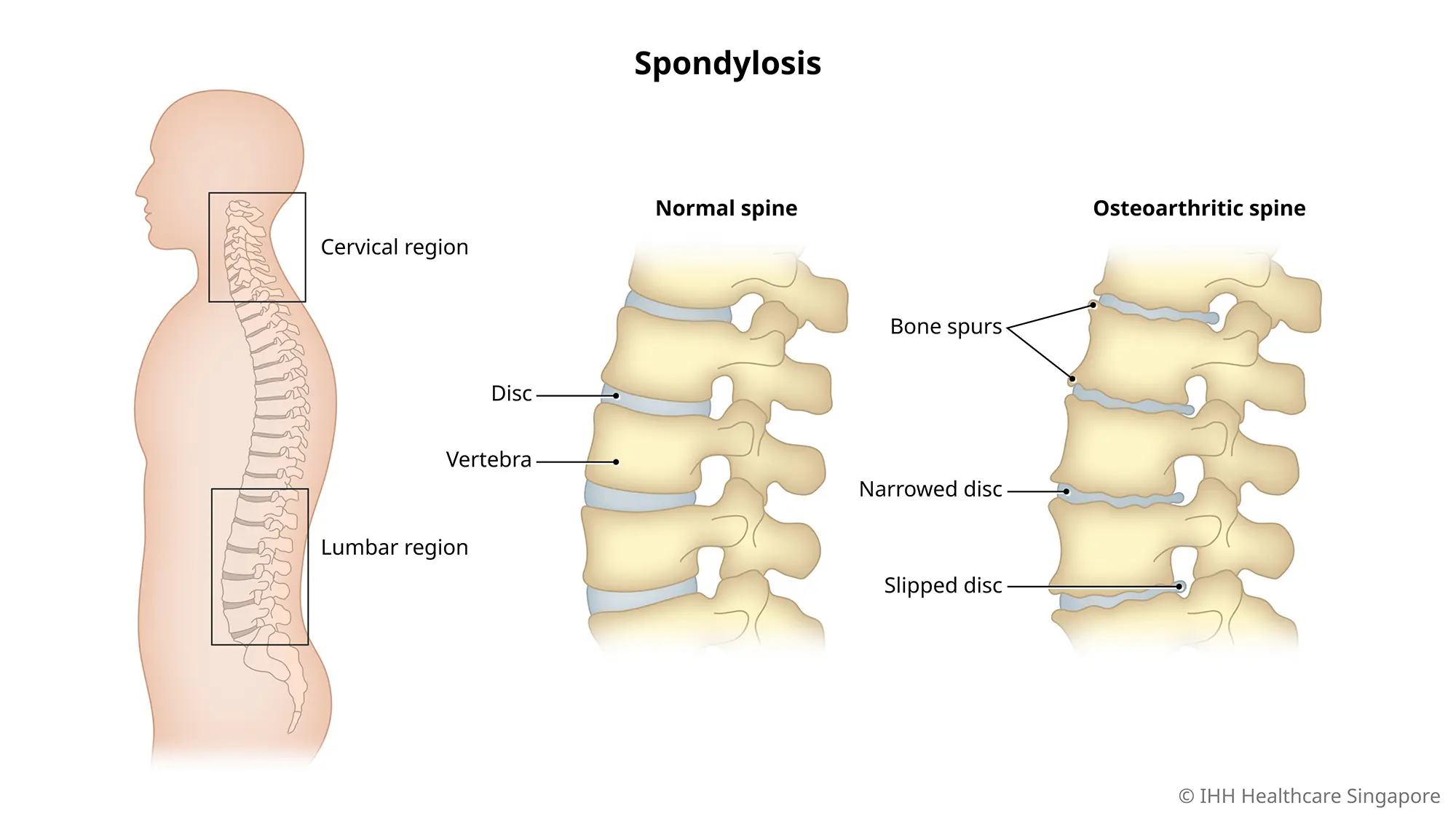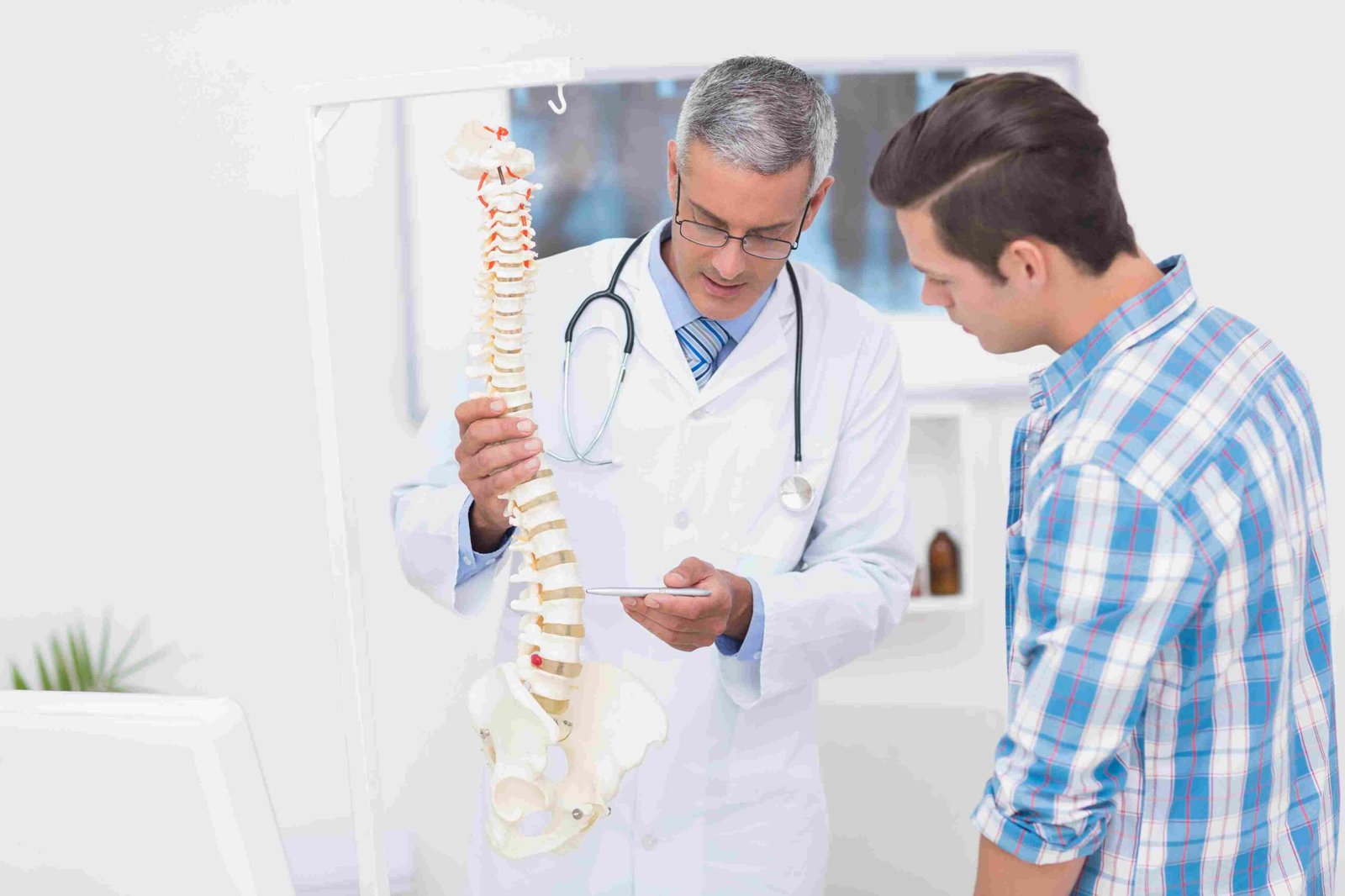Lumbar Spondylosis

Lumbar Spondylosis Demystified: A Comprehensive Guide for Better Living
In the vibrant heart of Mumbai, where life pulsates with energy, the prevalence of lumbar spondylosis has sparked a surge in advanced treatments. Mumbai, renowned for its healthcare prowess, offers cutting-edge solutions for those grappling with lumbar spondylosis. This article explores the realm of lumbar spondylosis treatment in Mumbai & Thane, where expertise and innovation converge to provide comprehensive relief. From diagnostics to personalized plans, Mumbai’s healthcare is committed to restoring spinal health and well-being. Join us on a journey through the avenues of lumbar spondylosis treatment in Mumbai & Thane, where each step brings you closer to a life free from discomfort.
What is Lumbar Spondylosis?
Lumbar spondylosis, a common degenerative condition affecting the lower spine, often leads to discomfort and reduced mobility. In the bustling city of Mumbai, finding the right treatment for lumbar spondylosis is crucial for those seeking relief.
Explore specialized care for lumbar spondylosis treatment in Mumbai & Thane. Optimize recovery with targeted physiotherapy sessions, constituting the best treatment. Enhance mobility through expert-guided lumbar spondylosis physical therapy treatment. Connect with the best doctor for lumbar spondylosis in Mumbai & Thane to navigate personalized management plans. Delve into comprehensive care with a lumbar spondylosis specialist doctor in Mumbai & Thane, ensuring tailored expertise. Embrace a life free from constraints through effective lumbar spine spondylosis treatment and holistic lumbar spondylosis management in Mumbai & Thane.
Causes of Lumbar Spondylolisthesis
Lumbar spondylolisthesis, the forward slipping of one vertebra over another in the lower spine, can be attributed to various factors. Understanding these causes is pivotal for effective management, especially in the context of lumbar spondylosis treatment in Mumbai & Thane. Here are the common causes, incorporating relevant keywords
- Degenerative Changes: The aging process and wear on spinal discs and joints contribute to degenerative changes. Addressing these issues is crucial in the context of lumbar spondylosis treatment in Mumbai & Thane.
- Traumatic Injuries: Acute injuries or trauma to the lumbar spine can result in misalignment, a factor considered in lumbar spondylosis treatment physiotherapy sessions for recovery.
- Genetic Predisposition: Genetic factors may predispose individuals to spondylolisthesis, necessitating specialized attention from the best doctor for lumbar spondylosis in Mumbai & Thane.
- Repetitive Stress: Activities involving repetitive stress on the spine can contribute to spondylolisthesis, emphasizing the need for lumbar spondylosis physical therapy to alleviate strain.
- Congenital Defects: Structural abnormalities from birth may contribute to spondylolisthesis, requiring tailored approaches in lumbar spondylosis management in Mumbai & Thane.
- Isthmic Spondylolisthesis: A specific type linked to defects in the isthmus calls for specialized attention from a lumbar spondylosis specialist doctor in Mumbai & Thane.
- Joint Arthritis: Arthritis affecting spinal joints is a contributor, highlighting the importance of considering arthritis in lumbar spine spondylosis treatment plans.

Understanding these causes within the Mumbai healthcare context allows for comprehensive strategies, including the best treatment for lumbar spondylosis and effective lumbar spondylosis physical therapy interventions tailored to individual needs.
Symptoms and Diagnosis of Lumbar Spondylolisthesis
Lumbar spondylolisthesis, a condition characterized by the forward displacement of one vertebra over another in the lower spine, manifests through various symptoms. Recognizing these signs and undergoing an accurate diagnosis are essential for effective management. Here’s an overview of the symptoms and diagnostic processes associated with lumbar spondylolisthesis
Lower Back Pain
Persistent pain in the lower back is a common symptom, often exacerbated by movement or prolonged periods of sitting and standing.
Leg Pain (Sciatica)
Radiating pain down the legs, known as sciatica, can occur when nerve roots are compressed due to vertebral displacement.
Muscle Tightness
Tightness and stiffness in the muscles of the lower back and legs may be experienced, affecting flexibility and range of motion.
Numbness or Weakness
Numbness or weakness in the legs and feet can result from nerve compression, impacting sensation and motor function.
Difficulty Walking
In severe cases, lumbar spondylolisthesis may lead to difficulty walking or maintaining a stable gait.
Diagnosis
Medical History
A comprehensive medical history review is crucial to understanding the patient’s symptoms, their onset, and any relevant contributing factors.
Physical Examination
A physical examination helps assess the range of motion, muscle strength, and neurological symptoms associated with lumbar spondylolisthesis.
Imaging Studies
- X-rays: X-ray images provide detailed views of the spine, allowing healthcare professionals to identify the extent of vertebral displacement.
- MRI (Magnetic Resonance Imaging): MRI scans offer detailed images of soft tissues, nerves, and discs, aiding in the assessment of nerve compression and damage.
- CT (Computed Tomography): CT scans provide cross-sectional images of the spine, offering additional details on bone structures.
Flexion and Extension Views
Dynamic X-rays taken in different positions (flexion and extension) help evaluate the stability of the spine and the degree of slippage.
Bone Scan
In some cases, a bone scan may be recommended to identify areas of increased bone activity, which can indicate stress fractures or instability.
Accurate diagnosis enables healthcare professionals to tailor an effective treatment plan, considering factors such as the severity of symptoms, patient age, and overall health. With advancements in diagnostic technologies, the identification and management of lumbar spondylolisthesis have become more precise, promoting improved outcomes for individuals affected by this condition.

When to Consult a Doctor for Lumbar Spondylosis
Seeking medical advice for lumbar spondylosis is crucial under certain circumstances. Here are situations indicating the need to consult a doctor, with a focus on lumbar spondylosis treatment in Mumbai & Thane.
Persistent Back Pain
If persistent lower back pain persists despite self-management, consider consulting a healthcare professional, especially one versed in lumbar spondylosis treatment in Mumbai & Thane.
Radiating Leg Pain
Seeking medical attention is crucial if lower back pain is accompanied by radiating leg pain, emphasizing the importance of lumbar spondylosis treatment and physiotherapy.
Numbness or Weakness
Persistent numbness or weakness in the legs requires evaluation, emphasizing the need for comprehensive lumbar spondylosis physical therapy treatment.
Difficulty in Walking or Standing
Consult a doctor if lumbar spondylosis significantly impacts mobility, and explore options for lumbar spine spondylosis treatment.
Loss of Bowel or Bladder Control
Immediate medical attention is crucial if there’s any loss of bowel or bladder control, underscoring the urgency for lumbar spondylosis management in Mumbai & Thane.
Worsening Symptoms
Progressive symptoms require prompt evaluation, emphasizing the need for the best treatment for lumbar spondylosis tailored to individual needs.
History of Trauma
If there’s a history of spinal trauma, even if symptoms emerge later, consulting the best doctor for lumbar spondylosis in Mumbai & Thane becomes essential.
Persistent Stiffness
Chronic stiffness impacting daily life necessitates medical assessment and exploring avenues like lumbar spondylosis physical therapy.
Pre-existing Conditions
Individuals with pre-existing conditions should seek medical advice if experiencing lumbar spondylosis symptoms, emphasizing the importance of lumbar spondylosis specialist doctors in Mumbai & Thane.
Impact on Daily Life
If lumbar spondylosis affects daily life, work, or activities, consulting a healthcare professional becomes crucial. Comprehensive evaluation and guidance on effective lumbar spondylosis treatment can be obtained from specialists in Mumbai.
Remember, timely consultation with a healthcare professional ensures accurate diagnosis and personalized treatment, including specialized options like lumbar spondylosis physical therapy, contributing to improved overall well-being.
Treatment Options for Lumbar Spondylosis
Non-surgical Treatments

Physical Therapy Exercises
- Tailored exercises are aimed at improving flexibility, strengthening core muscles, and enhancing overall spine stability.
- Targeted rehabilitation through lumbar spondylosis physical therapy helps alleviate pain and restore functional mobility.
Medications for Pain Relief and Inflammation
- Non-steroidal anti-inflammatory drugs (NSAIDs) and analgesics may be prescribed to manage pain and reduce inflammation.
- Medications play a role in non-surgical lumbar spondylosis treatment, providing symptomatic relief.
Lifestyle Modifications
- Implementing lifestyle changes, such as maintaining a healthy weight, practicing good posture, and avoiding activities that exacerbate symptoms,
- Ergonomic adjustments and modifications of daily activities contribute to the non-surgical management of lumbar spondylosis.
Surgical Interventions
When surgery may be recommended
- Surgery is considered when non-surgical methods fail to provide relief and symptoms significantly impact quality of life.
- Indications for surgery include severe pain, progressive neurological deficits, or loss of bladder or bowel control.
Types of Surgical Procedures for Lumbar Spondylosis
- Spinal Decompression: Removal of bone or tissue compressing spinal nerves, alleviating pressure, and addressing symptoms
- Spinal Fusion: joining two or more vertebrae to stabilize the spine and reduce motion between them.
- Laminectomy: removal of the lamina (back part of the vertebra) to relieve pressure on the spinal cord or nerves.
- Foraminotomy: enlarging the space where nerve roots exit the spine, reducing compression.
Risks and Benefits of Surgery
- Risks:
- Infection, bleeding, or adverse reactions to anesthesia
- Failed surgery leads to persistent symptoms.
- Potential impact on adjacent segments of the spine.
- Benefits:
- Significant pain relief and improved mobility.
- Stabilization of the spine, preventing further degeneration.
- Restoration of nerve function and overall quality of life
Choosing between surgical and non-surgical approaches depends on the severity of symptoms, response to conservative measures, and individual health factors. Consultation with a healthcare professional, including specialists experienced in lumbar spondylosis treatment in Mumbai & Thane, is crucial for personalized treatment decisions and optimal outcomes.
In conclusion, lumbar spondylosis is a complex condition that requires a multifaceted approach to management. By understanding its origins, recognizing symptoms, and exploring diverse treatment options, individuals can take control of their well-being. Whether through non-surgical interventions, lifestyle adjustments, or surgical procedures, there are avenues to pursue for relief and improved quality of life.
In the vibrant healthcare landscape of Mumbai, the comprehensive spectrum of lumbar spondylosis treatment reflects a commitment to holistic care and innovation. With a patient-centric focus, the city offers a range of services, from physiotherapy and medications to lifestyle modifications, epitomizing the ethos of the best treatment for lumbar spondylosis. The expertise of healthcare professionals, including the best doctors and dedicated Lumbar spondylosis specialists in Mumbai & Thane, ensures tailored solutions for each individual, fostering a return to an active and pain-free life. Through the integration of advanced techniques such as lumbar spondylosis physical therapy treatment, Mumbai’s healthcare providers prioritize not only pain relief but also enhanced functionality, marking a transformative journey toward lumbar spine spondylosis treatment in this dynamic metropolis.
Frequently Asked Questions
Lumbar spondylosis, also known as spinal osteoarthritis, is a degenerative condition affecting the lower spine. It involves the wear and tear of the spinal discs and facet joints, leading to pain and stiffness in the lower back.
Common symptoms include lower back pain, stiffness, and sometimes radiating pain or numbness in the legs. In advanced cases, individuals may experience difficulty walking or performing daily activities.
Lumbar spondylosis is primarily caused by the natural aging process, leading to the degeneration of spinal discs and joints. Other contributing factors may include genetic predisposition, injury, and lifestyle factors.
While lumbar spondylosis is a common and often age-related condition, it can cause significant discomfort and impact daily life. In severe cases, it may lead to complications that require medical intervention.
Yes, walking is generally considered beneficial for individuals with lumbar spondylosis. It helps improve flexibility, strengthen muscles, and maintain overall spinal health. However, it’s essential to consult with a healthcare professional to determine the most suitable exercise routine based on individual conditions.
Natural treatments for lumbar spondylosis may include regular exercise, maintaining a healthy weight, applying hot or cold packs, and practicing good posture. Some individuals find relief through alternative therapies such as yoga and acupuncture. It’s crucial to consult with a healthcare provider before starting any new treatment.
The best treatment for lumbar spondylosis varies from person to person. It often involves a combination of approaches, including physical therapy, pain management, lifestyle modifications, and, in some cases, surgical intervention. The most suitable treatment plan is determined based on individual symptoms and the progression of the condition. Consultation with a healthcare professional is essential for personalized advice.

